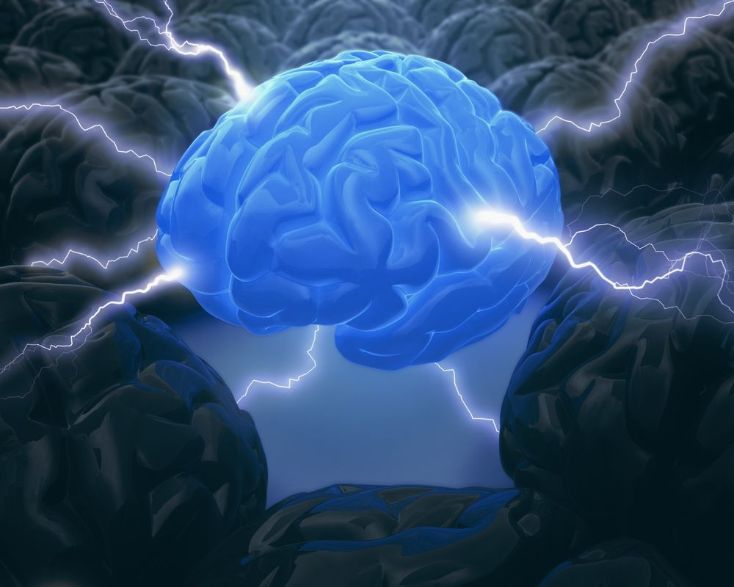
Does the human body have the capability to overcome any disease? How does the body heal itself? |
Are you suffering from any medical problem? Have you tried everything and did not work? There is no reason to be desperate at all. |
Write to me through WhatsApp or Email regarding the problem you suffer from and I shall personally return to you with an accurate reply about what to do |
Parkinson’s Symptoms & Treatments
Parkinson’s disease is a neurodegenerative disorder that results in characteristic involuntary movements such as slurred speech, loss of movement co-ordination and tremor. This disease strikes around fifty-five million men and women in the United States alone and is predominantly diagnosed in middle age. This degenerative disease strikes people from their late teen years to their late sixties. Parkinson’s symptoms gradually become more prominent with each passing year, and at some point in their lives, they may exhibit early signs or symptoms such as rigidity of the spinal cord, bradykinesia (lack of muscle tone), rigid muscles or a tremor or loss of hand coordination. In advanced Parkinson’s disease sufferers, total loss of motor function is common and it becomes impossible to swallow, talk or walk. 
One way to decrease the severity of symptoms of Parkinson’s disease is to control or slow down the progression of this disease by doing regular exercises and stretching exercises. Such regular exercises help increase muscle strength and tone, which may help ease tremors or stop involuntary movements. Stretching exercises also improve body circulation, relaxes muscles, tones the tendons and aids in wound healing. Relaxation techniques such as meditation, yoga and tai chi can also help to slow the progress of the disease and shorten the duration of Parkinson’s symptoms.
There are various medications available to treat Parkinson’s disease and the most commonly prescribed are dopamine release such as Finasteride (Propecia), and lofexidene bromide (Lofexid). These medications are designed to reduce dopamine level in the brain and reduce tremor or bradykinesia (lack of hand coordination and muscle tone) in patients already diagnosed with Parkinson’s. Patients who do not respond well to these types of medications may include anti-convulsant medications, anti-seizure drugs, antidepressants or antipsychotic medications. Anti-depressants can help ease depression, irritability, aggression and restlessness while antipsychotic medications can ease restlessness, aggression and tremor.
Doctors professors and scientists are astounded by Zarif’s tremendous ability and most claim that this is an Inexplicable phenomenon.
Many patients, including those with illness: Parkinson’s, cancer, disability, paralysis, diabetes, blindness, cerebral event, paralysis, mental illness, multiple sclerosis, heart problems and many other types of illness report outstanding results.
An Insight Into Parkinson’s Symptoms
Parkinson’s disease is characterized by the gradual loss of motor skills and movement which eventually results in a total inability to coordinate movements, as well as leading to loss of speech. The progression of this disease is characterized by four phases, namely: early, intermediate, advanced and degenerative. Each of these phases is further divided into sub-phases, namely: early tremor, middle tremor, advanced tremor and degenerative tremor.
Parkinson’s symptoms occur due to the dopamine abnormality in the brain. Dopamine is a chemical neurotransmitter, which functions within the brain to control muscle movement, balance, sensory processing, cognition and emotions. Parkinson’s disease progresses through a progressive loss of dopamine in the brain which causes the tremor, which is a term used to describe involuntary, rapid muscle twitching. The symptoms can appear either in the hands of the affected individual or more commonly in the central nervous system, which includes the brain and spinal cord.
The early symptoms of Parkinson’s disease are known as gait rigidity, lack of coordination, loss of balance and speech problems. As the disease progresses the symptoms tend to become more severe, which may result in a loss of bladder control, difficulty walking, muscle weakness and also loss of movement co-ordination. There are two types of early symptoms, namely, Parkinsonism type 1A (PDD-1A) which manifest with the characteristic signs and symptoms of Parkinson’s disease only, and the other being Parkinsonism type 2A (PDD-2A), which show the characteristic signs and symptoms of Parkinson’s disease along with some other neurological disorders. The later develops Parkinson’s syndrome, whereas the first type displays the symptoms of Parkinson’s disease only. The early symptoms may not be life-threatening, but the advanced symptoms need immediate medical attention as they may lead to loss of life. The early symptoms of Parkinson’s disease may not be accurately diagnosed, whereas the advanced symptoms of Parkinson’s disease are much difficult to diagnose owing to certain similarities between the early and advanced stages of the disease.
Parkinsonism type 1A (PDD-1A) which manifest with the characteristic signs and symptoms of Parkinson’s disease only, and the other being Parkinsonism type 2A (PDD-2A), which show the characteristic signs and symptoms of Parkinson’s disease along with some other neurological disorders. The later develops Parkinson’s syndrome, whereas the first type displays the symptoms of Parkinson’s disease only. The early symptoms may not be life-threatening, but the advanced symptoms need immediate medical attention as they may lead to loss of life. The early symptoms of Parkinson’s disease may not be accurately diagnosed, whereas the advanced symptoms of Parkinson’s disease are much difficult to diagnose owing to certain similarities between the early and advanced stages of the disease.

What Are Parkinson’s Symptoms?
Parkinson’s disease is one of the most common disorders affecting people across the globe today. Symptoms include trembling, loss of balance and coordination, difficulty swallowing, speaking problems, labored breathing, and a reduction in hand movement. This disease results from the loss of dopamine, which is present in the brain and responsible for controlling muscles and suppressing nerves signals. When the levels of dopamine in the brain are reduced, the result is often an imbalance of muscle signaling caused by inflammation throughout the brain. The result is often the characteristic motor problems seen with this condition. This is why it can be difficult to diagnose and is often misdiagnosed as something else.
Because Parkinson’s symptoms can mimic those of many other diseases, like Alzheimer’s disease, MS, or depression, understanding what is going on with your body and determining the true cause of the tremor may help to lead to a quicker diagnosis and a more successful treatment. A medical professional familiar with Parkinson’s disease should be consulted if you’re concerned about any of these symptoms. While these diseases all have different symptoms and causes, the early identification of Parkinson’s disease can be key in preventing serious complications.
A treatment plan can be developed to address the tremor, but no medication has yet been found that will actually cure the disease. Treatment may reduce the overall number of symptoms and help ease stress, muscle tightness, and stiffness that occur with Parkinson’s. Medications may also help to slow the progress of the tremor, or allow it to be less severe. Some medications may help ease tremors that happen on their own or by interacting with existing drugs.
Coping With Parkinson’s Symptoms
Parkinson’s disease is a degenerative disorder of the central nervous system that affects movement. Parkinson’s symptoms are divided into tremor, which is the most common of Parkinson’s symptoms and Parkinsonism Parkinson’s disease, which involve more severe and disabling signs and symptoms. This disease strikes men in their early to mid-thirties and women in their late thirties or early forties.
Parkinson’s symptoms may include tremors, slowing of movement, rigidity and leg weakness. The slowing of movement is caused by a breakdown of brain cells that produce dopamine, a chemical that regulates muscle movement. Other symptoms may include wobbling and weaving, poor handwriting, slurred speech, unable to control movements of both the body and face, and incontinence.
Parkinson’s symptoms become worse when not treated. This is why it is so important to see your doctor if you are experiencing any of these symptoms. Early detection will allow your doctor to find and treat your condition before it gets worse. If you suspect that you have Parkinson’s, there are several things you can do to help yourself.
Non-motor symptoms are difficult to diagnose, since some patients can still perform most daily functions. Tremor, on the other hand, can be very hard to live with. Parkinson’s sufferers will generally have difficulty holding back their laughter and speaking aloud, even to themselves. Some Parkinson’s symptoms can also include rigid muscles, such as those of the jaw, and poor balance.
Parkinson’s disease symptoms will get worse over time and may eventually cause Parkinson’s disease symptoms to become untreatable. However, treatments for tremor can improve the patient’s ability to function. For example, performing repetitive motor tasks such as tying shoes, picking up dropped objects, and writing can improve motor function. The same is true for speech.
Parkinson’s disease progresses through three phases. There is early Parkinson’s disease, which lasts between the first few years of life and about the age of forty-five. This is often referred to as the infant stage. Later, Parkinson’s symptoms begin to show up, usually in middle age, and progress through the later stages. The primary symptom seen in later stages is uncontrolled rigidity.
Treatment for Parkinson’s disease involves addressing both motor and non-motor symptoms. Medications such as dopamine antagonists, which are put into the body to block dopamine receptors in the brain, are sometimes used to manage non-motor symptoms. Other medications, such as non-benzodiazepines, are used to treat uncontrolled non-motor symptoms. Surgery may be used to remove areas of the brain affected by Parkinson’s disease.








